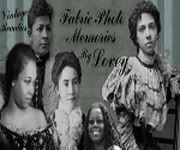These photos show an idealized vision of midcentury America… with a subtle hint of weirdness.
Nina Leen's work was some of the best - and least remembered
of Life's celebrated photographers
Beauty school, 1940s. (Nina Leen/The Life Picture Collection/Getty Images)
Not much is known about Nina Leen, the Russian-born Life photographer
who moved to New York in 1939 and proceeded to spend the next four
decades making some of the best — and least remembered — images the
magazine ever printed. Leen was one of Life’s
first female photographers when she was hired in 1945, and from the
beginning her work was magazine clean — direct, well lit, and
meticulous. Leen’s democratic eye conveyed an impressively diverse cast
of subjects over her career, from fashion and youth culture to
architecture, celebrity portraiture, and, in the end, a voluminous run
of animal books with titles like Dogs of All Sizes and The World of Bats.
She shot the infamous group portrait of Mark Rothko, Jackson Pollock,
Hedda Sterne, and the rest of the Irascible 18 — a group of rebel
Abstract Expressionists who boycotted the Metropolitan Museum of Art’s American Painting Today competition in 1950. In June 1953, her photo essay “Consider the Lowly Penny”
explicated in granular detail the indispensable role of currency’s
lowest denominator.
Overall, Leen’s focus was on American domesticity.
She didn’t chase news stories or produce immersive social documentary,
like her co-worker Gene Smith,
yet her images speak volumes about the aspirations and priorities of
the postwar mainstream (white) culture. It also centers women as
empowered protagonists, emphasizing the distinct traits and desires of
American teens, mothers, and busy professionals navigating the optimism
and possibilities of a booming economy. Like much of Life,
Leen’s pictures set the mold for an idealized vision of midcentury
America. Houses, homemakers, beauty, and appliances. The promise of a
better life through convenience.
Photographer Nina Leen at work. (Life photo archive hosted by Google)
Still,
there was an oddness about her eye. Perhaps owing to her status as an
outsider, Leen’s pictures often reveal more complex undercurrents than a
popular magazine like Life
would have been able to convey. Like her disconcerting series on the
Young Women’s Republican Club of Milford, Connecticut, or the story she
shot in January 1948 about indoor sunbathers in Atlantic City. Leen’s
work can be interpreted in multiple ways, but implicit throughout is a
critique of consumerism and privilege. Her portraits of art school
college students are a wry commentary on ambition and creativity in a
culture of conformity.
When Nina Leen passed away in early 1995, her New York Times
obituary noted that the photographer was “secretive about her age” but
was “believed to be in her late 70’s or early 80's” at the time of
death. A mention of her Abstract Expressionist shoot, having overcome a
fear of animals in order to photograph them, and her marriage to fashion
photographer Serge Balkin, rounded out the obit, succinctly titled
“Nina Leen Is Dead; A Photographer.”
Teenage couple at the movies, 1944. (Nina Leen/The Life Picture Collection/Getty Images)
Sleeping man with Hedy Lamarr pillow, 1947. (Nina Leen/The Life Picture Collection/Getty Images)
Model Norma Richter from a story about photographic fabrics, 1947.
(Photo By Nina Leen/The Life Images Collection/Getty Images)
Members of the Young Women’s Republican Club of
Milford, Connecticut,
play poker and smoke, 1960.
From a 1947 story, “American Woman’s Dilemma,”
about women balancing
work and family.
(Nina Leen/Time Life Pictures/Getty Images)
Brazilian musician Bernardo Segall giving
wife Valerie Bettis an ice cube treatment, 1948.
(Nina Leen/The Life Picture Collection/Getty Images)
Built-in toaster in a “kitchen-of-tomorrow” exhibit, 1943.
(Nina Leen/The Life Picture Collection/Getty Images)
(Nina Leen/The Life Picture Collection/Getty Images)
Two members of the Pamper Club—a Manhattan salon and social club
catering to working girls and suburban housewives—
resting on contour
chairs in 1952.
(Nina Leen/The Life Picture Collection/Getty Images)
From a story about sunlamps at the Senator Hotel
in Atlantic City, January 1948.
(Life photo archive hosted by Google)
Art school reportage for Life Magazine. (Life photo archive hosted by Google)
A woman samples different shades of lipstick on a
strip of paper at
Stephens College in Columbia, Missouri, 1945.
(Nina Leen/The Life
Picture Collection/Getty Images)
A woman irons while watching T.V., 1952.
(Nina Leen/The Life Picture Collection/Getty Images)
Family watching the phone, 1948.
(Nina Leen/The Life Picture Collection/Getty Images)
Now you go make something beautiful!
´¨)
¸.•´¸.•*´¨) ¸.•*´¨)
(¸.•´ (¸.•´? Tristan
¸.•´¸.•*´¨) ¸.•*´¨)
(¸.•´ (¸.•´? Tristan
It's kinda hard to tell which this boardwalk hunk is enjoying more -
the admiring glances of the bathing beauties or his own!
































































































No comments:
Post a Comment